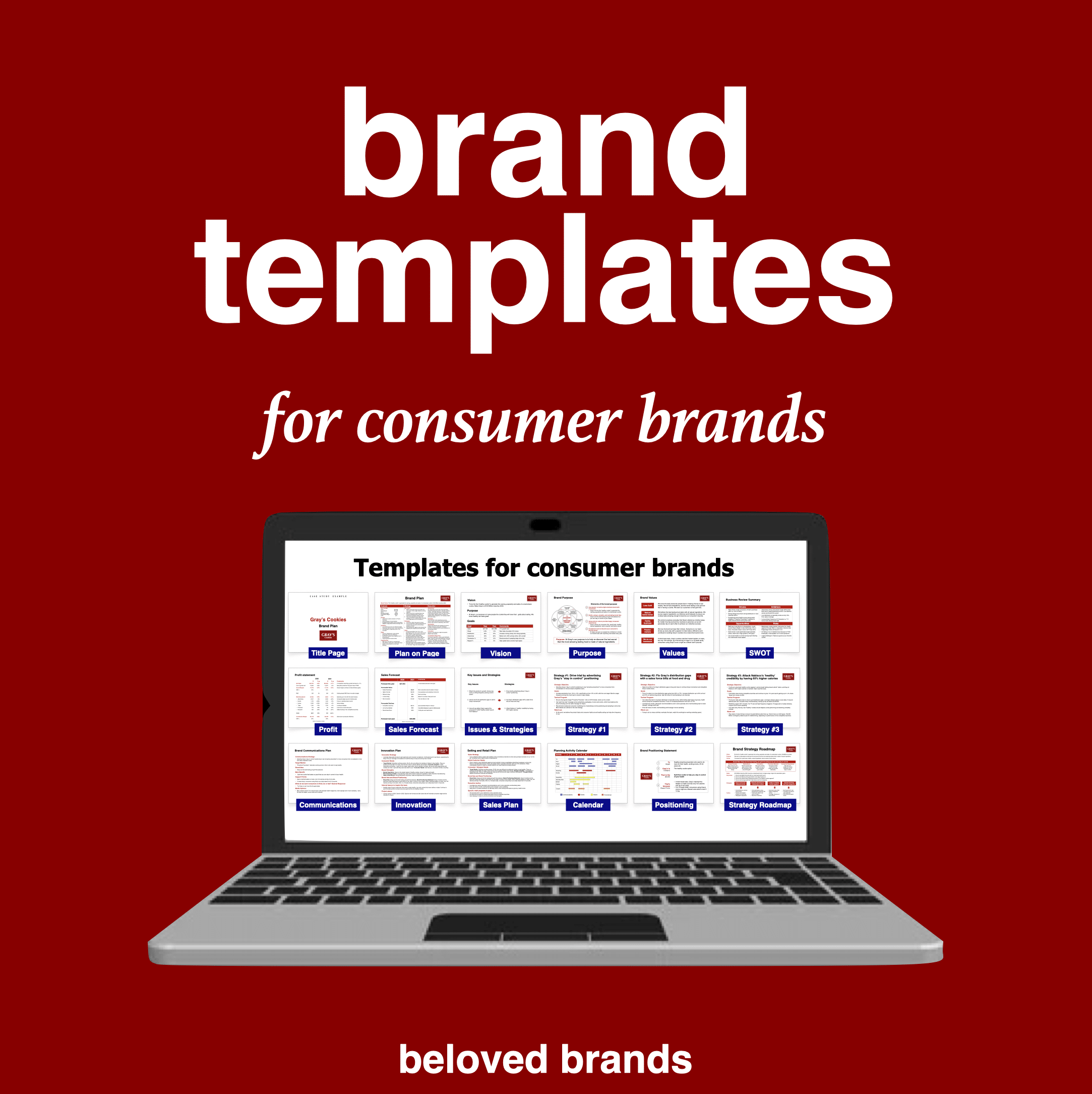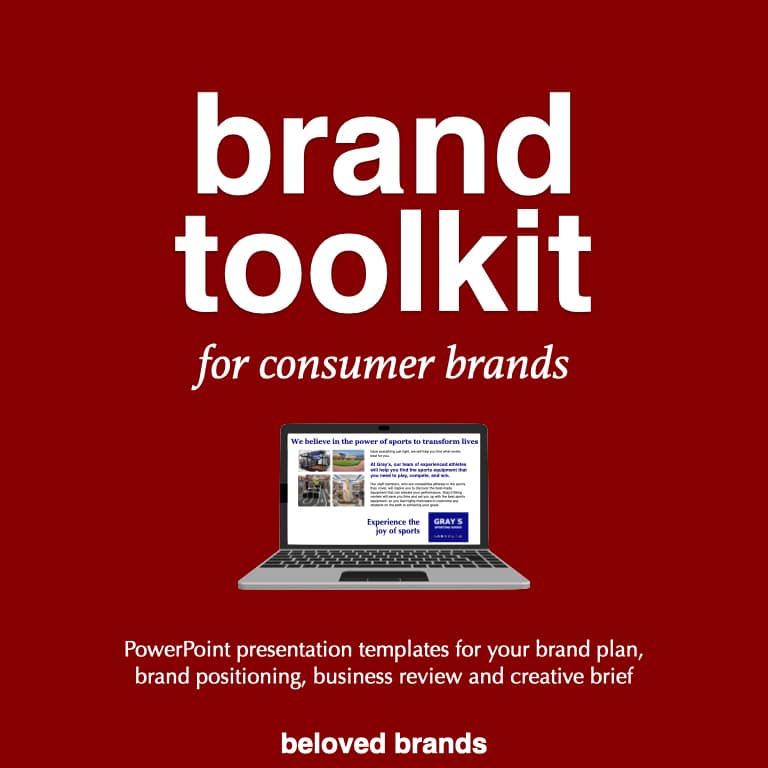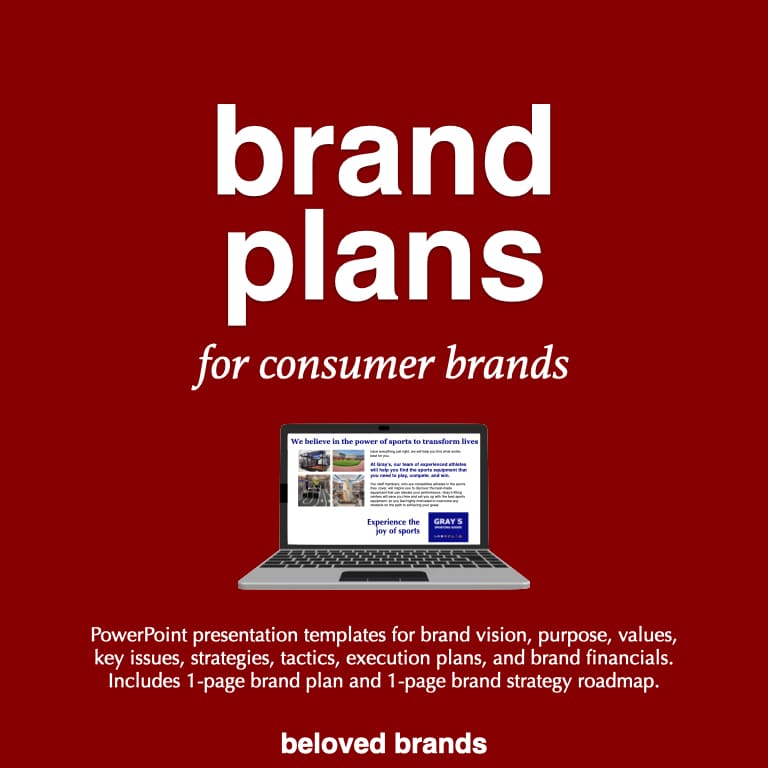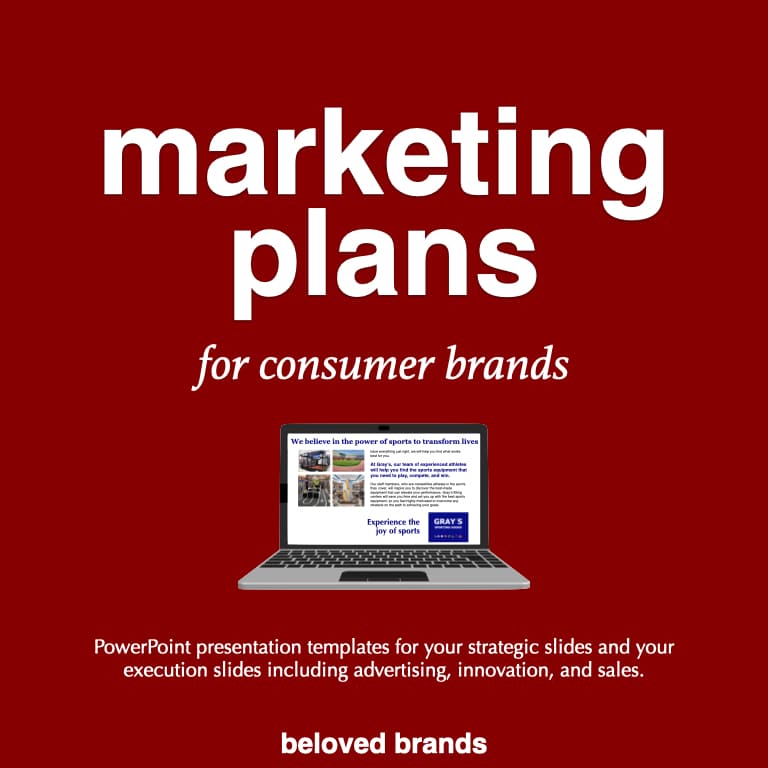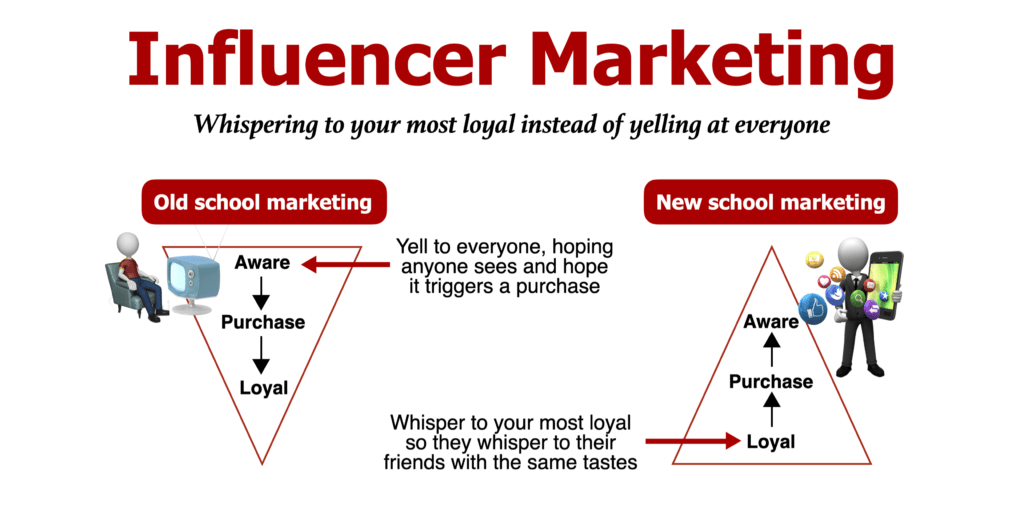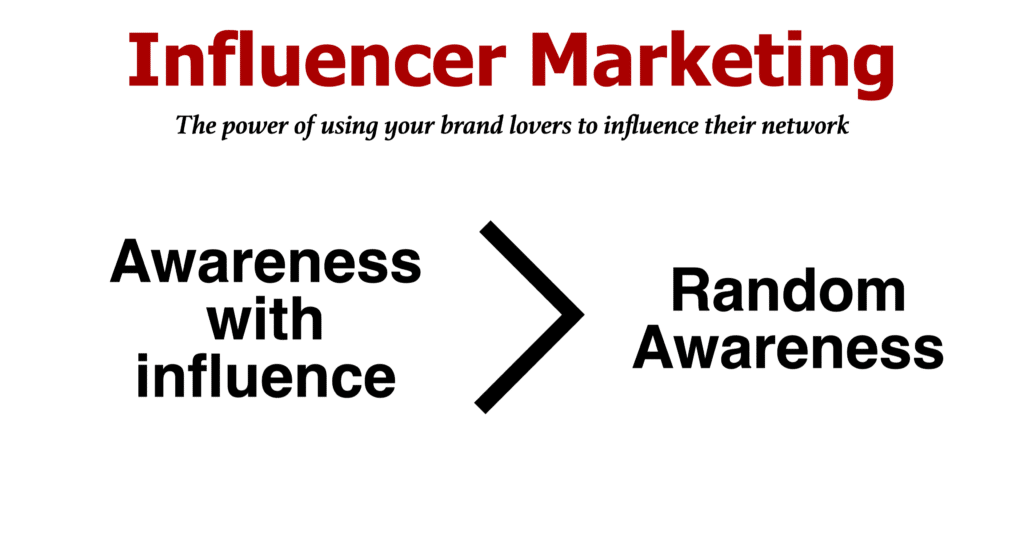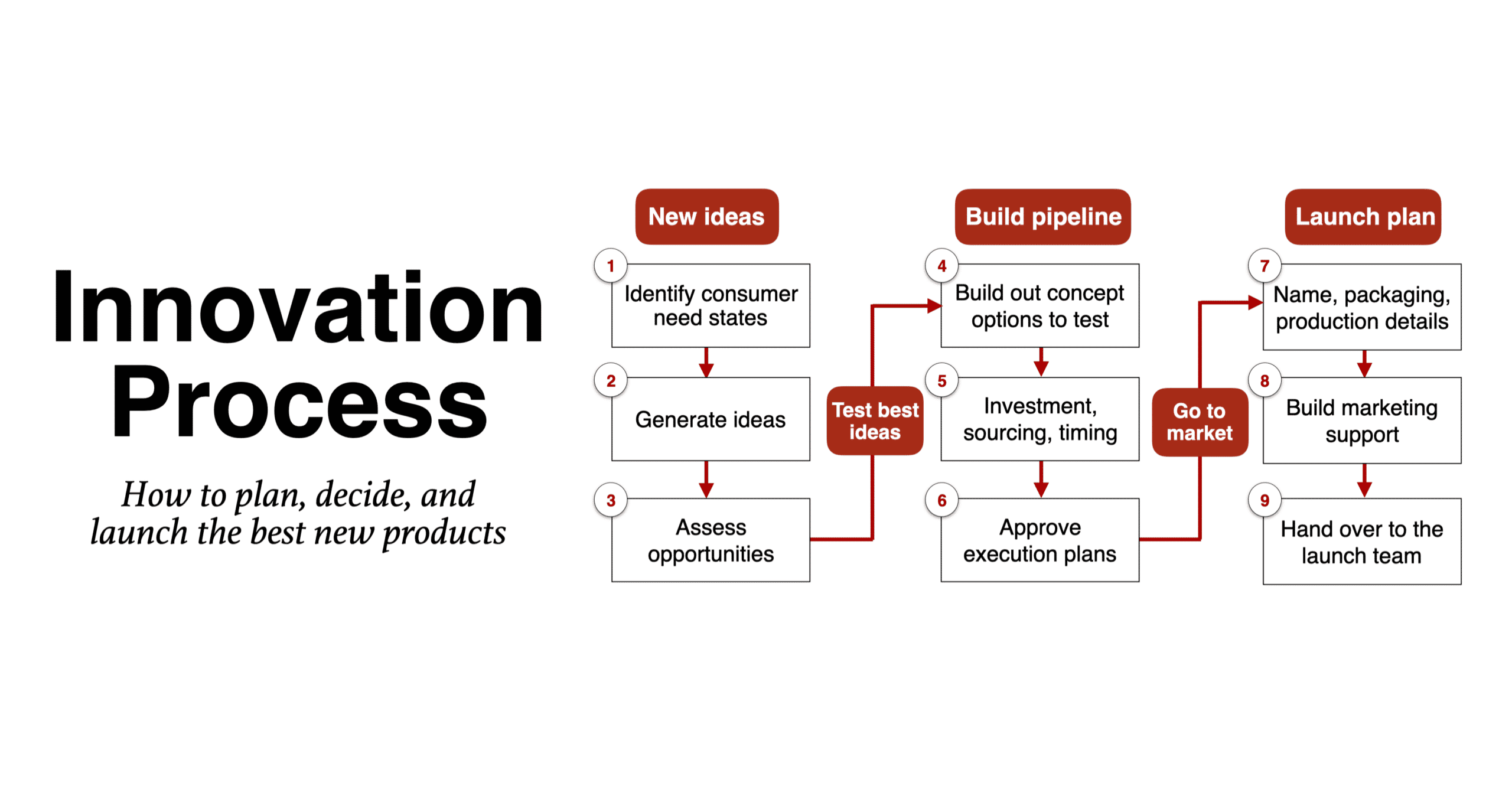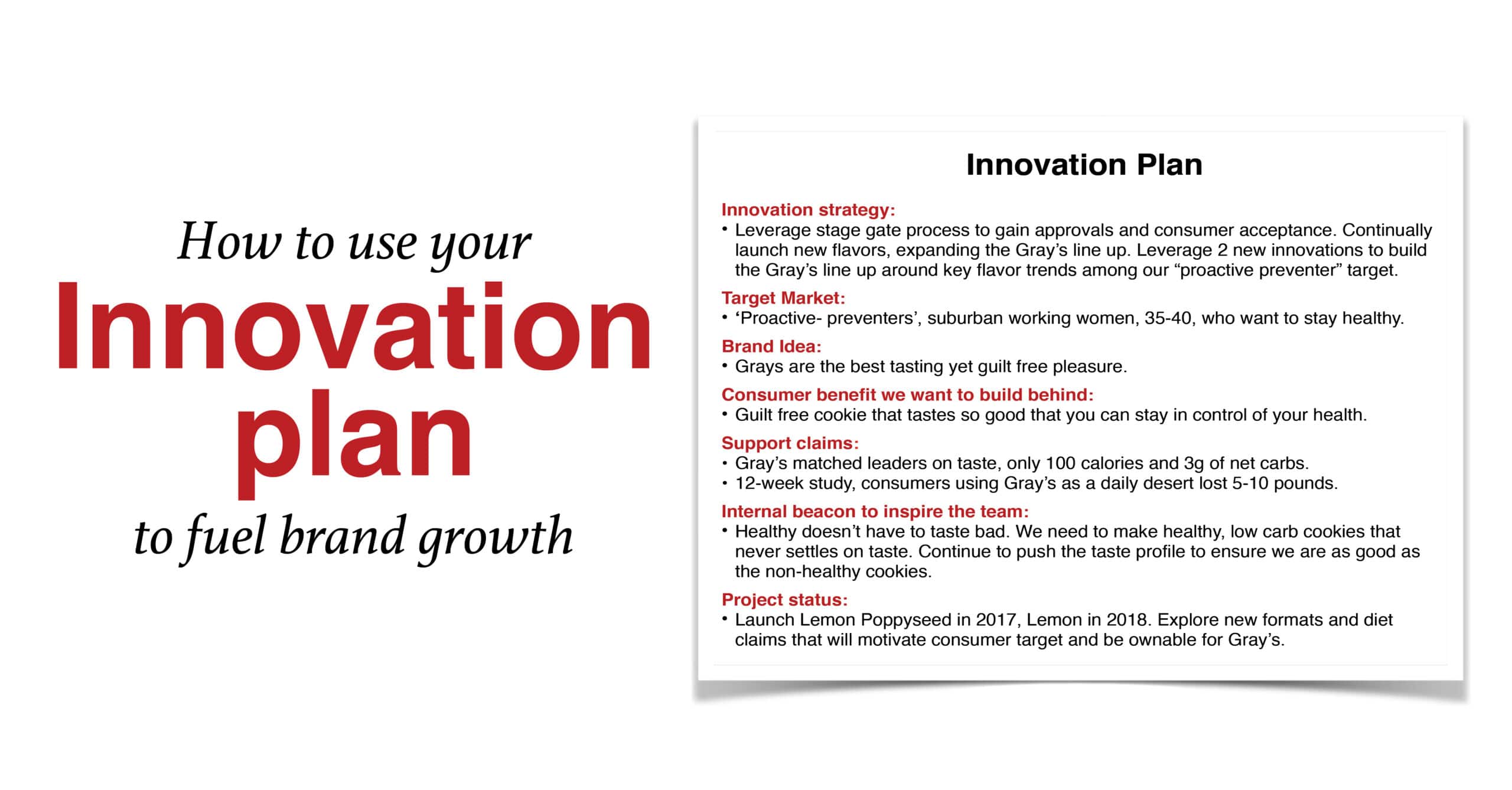Bob Dylan said, “The times are changing.” Today, businesses must update their strategies to remain competitive. It’s a mistake to think age doesn’t matter when targeting customers. Overlooking the importance of younger consumers, like Millennials and Gen Z, can be costly. Relying solely on your older loyal customers is risky in today’s fast-changing market.
The challenge for brands that have held their ground over the last several decades is this: How do they pivot effectively to these younger, dynamic consumers without causing disaffection among their faithful, mature clientele?
Brands must avoid becoming the next Oldsmobile – your dad’s classic car that lost its sheen, or Kodak that ruled the roost in the 80s, only to falter in the digital age, or Blackberry that was steamrolled by the iPhone revolution.
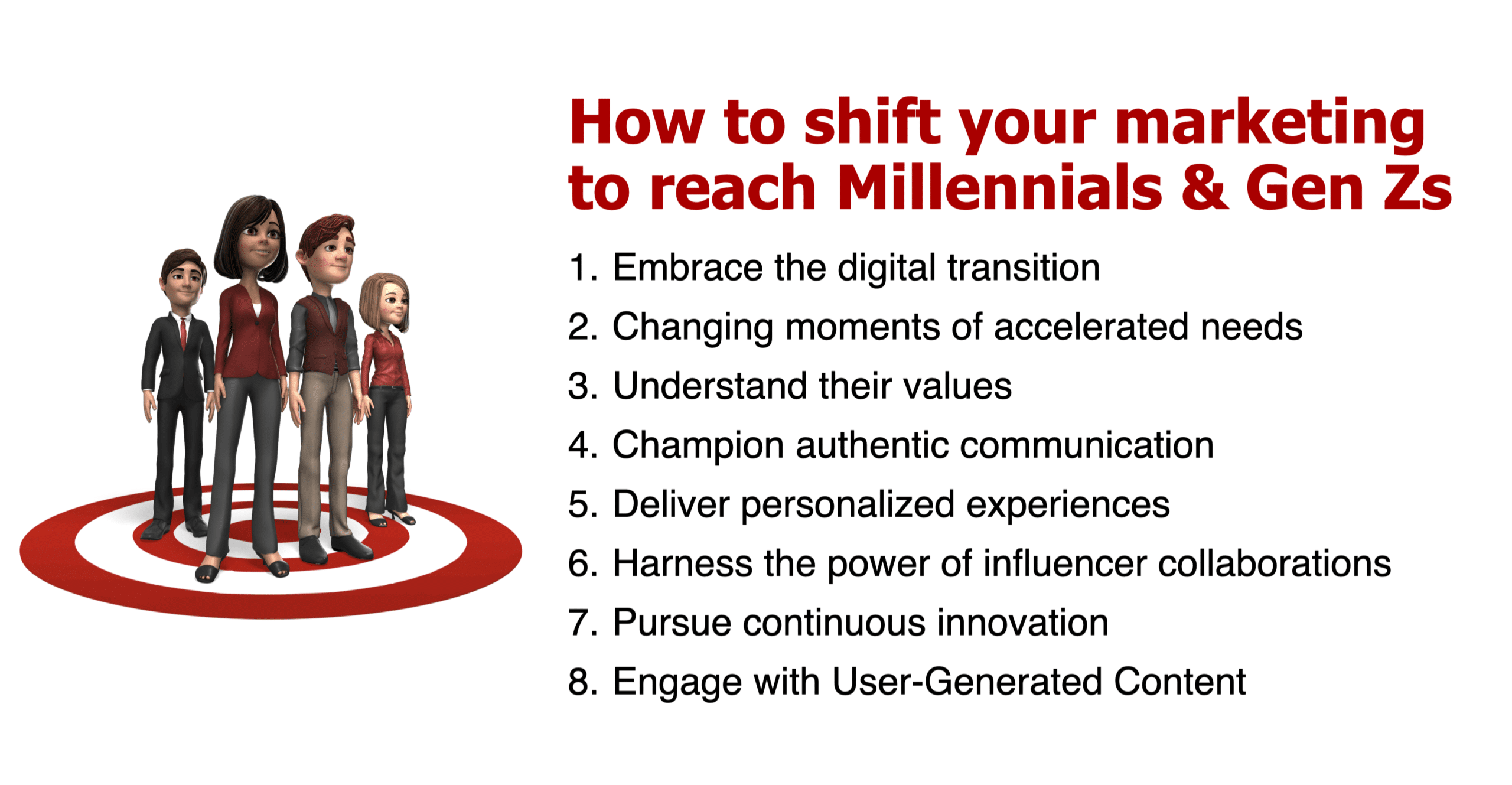
If your brand feels stuck in the echoes of past success, imagine how younger consumers see it.
An alarming number of brands have been beleaguered with consecutive declines over the last five years. During the pandemic, a couple of prosperous years may have given a false sense of security, fuelling speculation that these younger consumers would incorporate your brand into their routines. But as the pandemic drew to a close, these consumers retreated into their pre-pandemic lives, throwing brands off balance.
Hold onto your hats, folks. We’re dealing with a new breed of consumers.
This new generation – the Millennials and Gen Z – they don’t just walk to a different beat, they’re practically in another dimension. They shop in new ways. And, they share information through channels our generation could hardly have dreamt of. Importantly, they get their kicks from entertainment and news sources that can seem like they’re in an alien language.
Welcome to the era of instant shopping gratification. We’re not just talking about free two-day shipping. We’ve gone beyond that. For these digital natives, their retail experience starts and ends in their palms. Online marketplaces, virtual fitting rooms, ‘Buy Now’ buttons popping up in social feeds. If it’s not at their fingertips, it doesn’t exist. But beware: if they spot greenwashing or a lack of authenticity, they’ll drop you faster than a hot potato.
And their communication habits? It’s not just a text or an email. It’s an elaborate dance across platforms – Instagram DMs, Snap streaks, TikTok duets, Discord chats. They’re coding in emojis, GIFs, and memes. Importantly, their conversations, their relationships, their whole social life, thrives in this virtual space where ‘IRL’ (In Real Life) meets URL.
And let’s talk about entertainment and news. They’ve got an appetite for content that’s raw, real, on-demand. Traditional TV? Only at their grandparents’ house. They’re binging Netflix shows, following YouTube stars, catching up with news on Twitter, consuming podcasts at double speed. They demand diversity and representation, crave stories that mirror their realities, and champion voices that challenge norms. And remember, in their world, anyone with a smartphone and an idea can be a content creator.
Let’s face it: these younger consumers are different.
They’re not just passive spectators in the marketplace. They’re driving change, shaping trends, and influencing the way businesses operate. As marketers, we need to readjust, to not just understand but immerse ourselves in these new realities. Otherwise, we’re just shouting into the void. Buckle up, it’s a brave new world.
The task at hand, now, is to revitalize your brand’s growth trajectory by adeptly navigating the transition to the Millennial and Gen Z consumers. Brands need to master this transition to regain their momentum and ensure they remain a compelling force in the market for the years to come.
If your brand feels like it’s stuck in 1999, let’s dive into this conundrum, analyzing our eight core principles that brands need to navigate the turbulent seas of the modern marketplace successfully. Try one or two out on your own brand. I hope you see an immediate impact.
How to reach Millennials and Gen Zs
1️⃣ Embrace the digital transition
2️⃣ Changing moments of accelerated needs.
3️⃣ Understand their values.
4️⃣ Champion authentic communication.
5️⃣ Deliver personalized experiences.
6️⃣ Harness the power of influencer collaborations.
7️⃣ Pursue continuous innovation.
8️⃣ Engage with User-Generated Content.
1. Embrace the digital transition
Indeed, the digital wave isn’t a looming disaster; it’s our current reality. Millennials and Gen Z individuals are proficient in tech-speak, residing in a world where smartphones are vital.
Thus, brands aiming to tap into these markets must do more than just maintain an online presence. They need to understand and integrate into this digital landscape fully.
Moreover, living without a smartphone for these generations is as unthinkable as being without air. Consequently, if brands seek deep market penetration, their immersion in this digital universe is crucial.
Examples of brands who have used digital to reach younger.
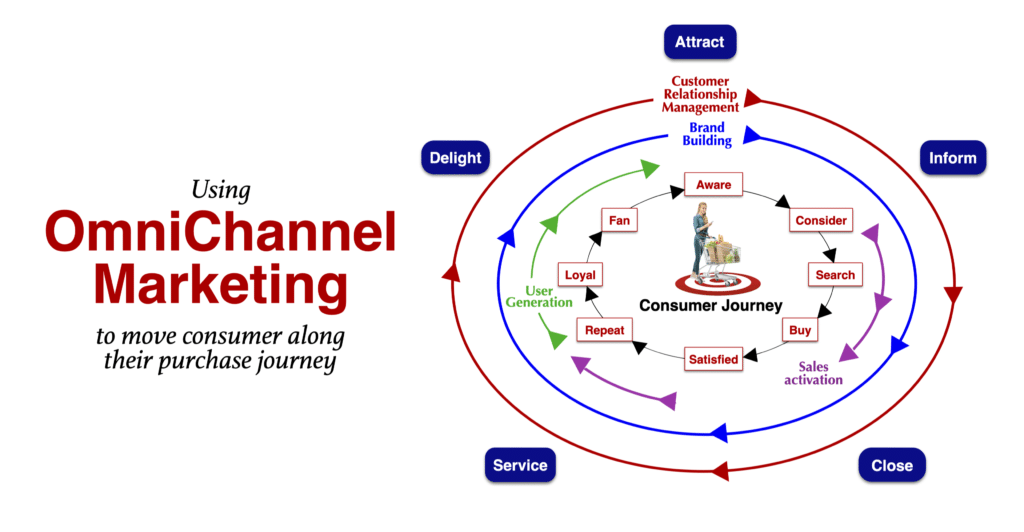
To start, Nike, the titan of sportswear, serves as an exemplar in this domain. It’s not just their digital presence that impresses, but the immersive world they’ve created online. Importantly, they offer bespoke product suggestions and pioneering features such as ‘Nike Fit’ – a groundbreaking AR tool ensuring your sneakers fit like a dream. Essentially, they’ve crafted an online realm that fully embraces the digital.
Next, Sephora has taken control in the digital beauty retail market. The company’s inventive Virtual Artist app, enabling users to try makeup virtually, delivers a thrilling online shopping journey tailored for digital natives.
Moreover, Sony’s choice to release a digital-only PlayStation 5 demonstrates their deep understanding of the digital shift in gaming. This is seen in their robust online gaming and store services.
As well, Amazon, the giant of e-commerce, continually refines its digital journey to ensure not just simplicity, but pleasure in shopping. The company’s intuitive one-click buys and personalized recommendations embody the user-centric digital universe.
Finally, T-Mobile has welcomed digital platforms with open arms, leveraging them for customer service through live chats and virtual assistants. With their mobile apps, they offer digital services including billing, support, and product exploration, fully immersing themselves in the digital universe.
One brand that notably made a significant splash is Liquid Death. This intriguingly canned water company managed to capture consumers’ attention not just with its product but through its audacious branding and marketing. Our Liquid Death case study will showcase some of the most creative advertising we have ever seen. That over-the-top creativity sends a signal to Gen Z consumers (under 25) that Liquid Death is the anti-corporate brand.
2. Changing moments of accelerated needs
Besides joining the digital revolution, brands must grasp another vital concept for appealing to Millennial and Gen Z customers: evolving, accelerated needs. The crux is recognizing that transformative events greatly influence these younger generations’ wants and purchasing habits.
Moreover, brands should decipher these pivotal moments and be ready to intervene. They should offer the appropriate products or services exactly when customers are most open to them.
Furthermore, it’s crucial to understand that major life events significantly shape these generations’ demands. Hence, their shopping behavior is deeply impacted.
Lastly, brands need to interpret these crucial events accurately, delivering the right offerings when consumers are most receptive, thus ensuring success.
Examples of brands who do a great job with the moment of accelerated needs.
First, the HelloFresh meal-kit delivery service resonates with Gen Z college students and young professionals taking their first tentative steps into the culinary world. As these young adults bid adieu to their family homes and begin to fend for themselves, HelloFresh presents an accessible route to nutritious, homemade meals. Their marketing strategy cleverly targets this pivotal phase in their consumers’ lives.
Next, Etsy is the online marketplace flourishes on consumers’ amplified needs during life transitions such as tying the knot, welcoming a newborn, or moving houses. The appeal lies in the handmade, personalized items for these milestones, which hold immense appeal for Millennials and Gen Z consumers who prize uniqueness and customization.
A favored meditation and sleep app, Calm steps in during periods of heightened stress and need for self-nurturing, a philosophy rapidly gaining ground among younger generations. By providing relaxation and mindfulness tools, Calm addresses the growing demand for mental health resources among this demographic.
The LinkedIn platform has emerged as the preferred networking space for young professionals stepping into the professional arena. LinkedIn supplies the necessary tools to navigate the job market, especially during crucial junctures like graduation, job transitions, or career progression. Moreover, their range of courses cater to the constant learning mindset characteristic of Millennials and Gen Z.
Lastly, consider Rent the Runway: As Gen Z consumers prioritize experiences over acquisitions, Rent the Runway offers the option to rent designer clothing for specific events rather than buying them. This model harmonizes well with younger consumers’ preference for variety and sustainability, and addresses specific instances like job interviews, weddings, or social gatherings.
3. Understand their values
These sprightly generations aren’t just shopping for goods – they’re putting their money where their beliefs are. They’re advocates for diversity, inclusivity, and sustainability, and they seek to patronize brands that echo these principles.
Brands who understand the values of younger consumers.
To start, there’s Patagonia, the outdoor apparel company that deeply resonates with this value-infused mindset. Patagonia’s notorious dedication to environmental sustainability and activism has garnered them a robust following among environmentally-conscious Millennials and Gen Z consumers.
Then there’s Lush, the cosmetics brand renowned for their unwavering commitment to ethical sourcing and environmental preservation. Their staunch stand against animal testing and their package-free products echo with the value-driven approach of younger shoppers.
With electric vehicles as their centerpiece, Tesla is aligned with sustainability and innovation magnetizes eco-aware Millennials and Gen Z consumers.
REI, the outdoor equipment cooperative, prioritizes sustainability and outdoor adventures. Their #OptOutside campaign, encouraging people to enjoy the great outdoors on Black Friday rather than indulge in a shopping spree, resonates with the values held dear by younger generations.
Lastly, there’s Uniqlo, the clothing brand promotes sustainability via initiatives such as their recycling program, which reclaims and repurposes used Uniqlo apparel. This syncs with the eco-friendly disposition of Millennial and Gen Z consumers, further enhancing their appeal.
M A R K E T I N G B O O K
beloved brands
the playbook for how to create a brand your consumers will love
Covering every aspect of brand management, it is no wonder that our readers reach for Beloved Brands multiple times each week to guide them through the challenges of day-to-day brand management.
Get ready for a mind-bending journey as we take you on a deep dive into your brand strategy. We’ll challenge you with thought-provoking questions designed to shake up your thinking and help you see your brand in a whole new light. And our unique process for defining your brand positioning will leave you with fresh ideas and new possibilities for how to differentiate your brand.
But we won’t just leave you with ideas – we’ll show you how to turn them into action. Learn how to write a brand plan that everyone can follow, ensuring that all stakeholders are aligned and contributing to your brand’s success. We’ll walk you through the creative execution process, from writing an inspiring brief to making smart and breakthrough decisions.
And when it comes tao analyzing your brand’s performance, we’ve got you covered. Our innovative methods will help you dive deep and uncover insights you never knew existed, giving you the knowledge you need to make the best decisions for your brand’s future.
But don’t just take our word for it – our Amazon reviews speak for themselves.
With over 85% of our customers giving us a glowing five-star rating and an overall rating of 4.8 out of 5.0, we know we’re doing something right. And with numerous weeks as the #1 bestseller in brand management, you can trust that we have the experience and expertise to help you achieve success.
Ready to join the ranks of the Beloved Brands community? Order our book on Amazon, Rakuten Kobo, or Apple and start your journey towards brand success today.
4. Champion Authentic Communication
Transparency is not merely a nice-to-have – it’s a non-negotiable. Millennial and Gen Z consumers are drawn towards brands that are bold enough to discard the corporate façade and reveal an authentic, genuine identity.
Examples of brands who champion authentic communication to reach the younger millennial and Gen Z audience.
First, take a look at McDonald’s, a brand that could have easily fossilized, yet it has deftly stayed afloat. Their social media is a testament to transparency – laying bare everything from their food sourcing methods to their community engagement initiatives.
Then, there’s Everlane, a clothing brand rooted in ethical sourcing. They go the extra mile in transparent communication, divulging intricate cost structures and supply chain data to their consumers, positioning themselves as a brand that treasures candor and transparency.
Consider Starbucks who have cultivated a reputation for transparency, especially when it comes to their sourcing practices and dedication to fair trade. They’ve been unflinchingly open about their ambitions regarding hiring refugees and veterans, and reducing their environmental footprint, showing genuine commitment to social causes.
As a virtual platform for mental health services, BetterHelp champions frank discussions about mental health issues. They regularly share real-life stories and testimonials, underscoring the significance of mental health and the benefits of their services.
Finally, leveraging its community-driven model, Airbnb often shares stories from hosts and guests, showcasing the human element behind every booking. This authentic dialogue helps cultivate trust and fosters community among Millennial and Gen Z consumers.
5. Deliver Personalized Experiences
Millennials and Gen Z are the ‘me’ generations, hungry for customized experiences. This desire for personalization covers a wide range – from marketing missives to the products and services themselves.
Examples of brands who deliver personalized experiences.
First, Coca-Cola’s “Share a Coke” campaign is a case in point. By etching consumers’ names on their cans, they foster a bond between the brand and the individual consumer. The brilliance of this campaign stems from its humble ability to infuse a personal touch in an otherwise impersonal marketplace. Coke ads are always aligned with consumers.
Next, Spotify has become a virtuoso of personalization. Their Discover Weekly and Daily Mix playlists, catered to individual users’ auditory tastes, make each user’s experience singularly personal and build a robust connection with their audience.
With its recommendation algorithm, Netflix delivers a viewing experience tailored to each user. Their “Because you watched…” feature handpicks content suggestions based on users’ viewing patterns.
Finally, the Peloton brand offers a customized fitness journey, with user profiles that monitor progress and propose personalized workout suggestions. They also offer a wide array of class types and difficulty levels, catering to diverse fitness levels and preferences.
Marketers Guide to OmniChannel Media
To illustrate, we go through 14 different media choices with when to use and what cautions to be aware of:
📺 𝗧𝗵𝗲 𝗖𝗹𝗮𝘀𝘀𝗶𝗰𝘀: Starting off with the timeless titans – TV, Out-of-Home, and Print. Why are they still relevant, and when should you lean on them?
🌐 𝗗𝗶𝗴𝗶𝘁𝗮𝗹 𝗗𝗶𝘃𝗲: From Digital Display to the mesmerizing realm of Digital Video and harnessing the power of your own video content. The digital domain awaits!
📲 𝗦𝗼𝗰𝗶𝗮𝗹 & 𝗕𝗲𝘆𝗼𝗻𝗱: Navigating the bustling streets of social media, leveraging user-generated content, and mastering the art of PR. We’ve got the roadmap!
💻 𝗖𝗿𝗲𝗮𝘁𝗶𝗻𝗴 𝗬𝗼𝘂𝗿 𝗢𝗻𝗹𝗶𝗻𝗲 : Ever contemplated when it’s prime time to establish your own website? How about acing content marketing or optimizing for SEO? We’ve got the answers!
To illustrate, click X to expand the document and then the > to view each page.
Our brand toolkit for consumer brands is our most comprehensive template helps you communicate your brand plans, brand positioning, business review and creative briefs.
Our brand plan template offers slides for vision, purpose, analysis, key issues, strategies, and execution plans, ensuring a thorough approach to your brand’s development. The brand positioning template guides you through defining your target profile, crafting a brand positioning statement, and developing a unique brand idea, concept, values, story, credo, and creative brief. Finally, our business review template provides slides for in-depth analysis of the marketplace, customers, competitors, channels, and your brand.
Choose the right template for your business needs
Marketing Plans for consumer brands
Combining strategic slides for insightful planning and marketing execution slides for seamless implementation, our templates are designed to propel your brand towards success and help you make a lasting impact in the market.
6. The power of influencer collaborations
Influencers aren’t simply celebrities. They’re confidantes for their multitude of followers. Brands that join forces with influencers can tap into an audience that’s already invested and unwaveringly loyal. Getting brand fans to speak out is the most important task.
Examples of brands who use the power of influencer collaborations.
To start, McDonald’s has shrewdly tapped into this dynamic with their collaborations with cultural icons such as global K-Pop sensation BTS, which resulted in the “BTS Meal,” offering a combination of menu items favored by the band members and available in multiple countries. Moreover, McDonald’s has also worked with other celebrities in localized promotions. For instance, in 2021, McDonald’s introduced a meal collaboration with Colombian singer J Balvin, which included some of his favorite McDonald’s items.
Old Spice has smartly employed celebrity and influencer endorsements to breathe new life into their brand image. Partnerships with celebrities such as Terry Crews and Isaiah Mustafa have facilitated their access to younger audiences.
By partnering with fitness influencers and athletes, Lululemon has carved out a strong brand presence among fitness aficionados. These partnerships have enabled the brand to broaden its reach and resonate with the active lifestyles of Millennials and Gen Z.
Red Bull frequently collaborates with extreme sports athletes, who naturally align with their high-octane brand persona. These collaborations have helped them establish a robust presence among Millennial and Gen Z consumers.
7. Pursue continuous innovation
Innovation isn’t just a buzzword. It’s the life-giving oxygen in the corporate world. Millennials and Gen Z don’t just grudgingly accept change – they demand it. Importantly, brands that make innovation part of their DNA find themselves rewarded with these generations’ loyalty.
Example of brands who pursue continuous innovation as part of their success with younger consumers.
First, Nike has put this theory to the test and emerged victorious. From their self-lacing sneakers to their pioneering performance-enhancing fabric technologies, Nike shows that when you make innovation your compass, consumers will eagerly journey with you.
Next, Apple has also ceaselessly reinvented its products and services. From the iPod to the iPhone to the Apple Watch, Apple’s unwavering commitment to innovation keeps consumers on their toes, eagerly anticipating their next move. This innovation-led strategy has cemented their status as a cherished brand among younger generations.
The NBA has enthusiastically embraced innovation through technology to enhance fan engagement. By leveraging virtual and augmented reality experiences, interactive fan voting, and broadcasting games on digital platforms like Twitter, they’ve shown a deft understanding of their younger audiences.
Tesla is practically a synonym for innovation. From self-driving capabilities to groundbreaking battery technology, Tesla is constantly expanding the horizons of what’s deemed possible in the automotive industry.
Google’s relentless commitment to innovation across their product and service lines, spanning from search to AI to self-driving cars, ensures their relevance and appeal for younger consumers remain intact.
Finally, Amazon’s incessant drive for innovation in AI (with products like Alexa), delivery (pioneering drone delivery), and retail technology (with their revolutionary cashier-less Amazon Go stores) keeps them at the forefront of Millennial and Gen Z consumers’ minds.
8. Engage with user-generated content
User-generated content isn’t a fleeting fad. It’s the nuclear engine propelling trust and engagement in this consumer peer-trusting era.
Examples of brands engaging with user-generated content to reach millennials and Gen Z consumers.
First, LEGO tamed the user-generated content beast like a pro. They regularly showcase user-created designs on their website and social media platforms, transforming customers from passive consumers into active creators. This approach has helped LEGO foster a vibrant and engaged community around their brand.
Moreover, GoPro has artfully woven use-generated content into their marketing tapestry. They regularly highlight customer-captured photos and videos on their social media and website, making their customers feel valued and appreciated while fostering a tight-knit community around their brand.
Lululemon’s #thesweatlife campaign, which motivates customers to share their workout photos decked out in Lululemon gear, has been a masterstroke. This customer-generated content cultivates a sense of authenticity and community that wraps around the brand like a snug-fitting yoga pant.
The Body Shop, renowned for its nature-inspired beauty and skincare products, recently invited a group of Gen Z individuals to critique the company. Unfortunately, the response was less than favorable. It exposed several disconnects between the company and the values, desires, and expectations of Gen Z. From there, The Body Shop decided to form a board composed entirely of individuals from the Gen Z demographic. This board will help the company stay connected with the younger audience.
Finally, Red Bull consistently showcases user-generated content related to extreme sports on their social platforms, cultivating a buzzing community of thrill-seekers and ensuring their content stays as fresh as a can of their signature energy drink. Read our Red Bull case study.
A guide for brands on how to transition to younger Millennial and Gen Z consumers.
Firstly, let’s clarify: appealing to Millennials and Gen Z isn’t about abandoning long-time, loyal customers. It’s about evolution, not reinvention. It’s about keeping your brand essence while adapting to new generational rhythms.
Furthermore, these case studies we’ve discussed are excellent examples. They show how brands can adeptly adapt to connect with younger consumers, without alienating core fans. It’s not a quick shift but a balanced blend of the old and new.
Also, whether it’s mastering the digital trend, understanding their values, promoting authenticity, offering tailored experiences, leveraging influencers, persistently innovating, or using user-generated content – brands can maintain and even advance in this dynamic market.
Brands, it’s time to get ready. The business landscape is changing, and survival relies on adaptability and evolution.
Lastly, Scott Galloway once said, “The best time to plant a tree was 20 years ago, the second-best time is now.” So, pick up your symbolic shovel – it’s time to plant.



